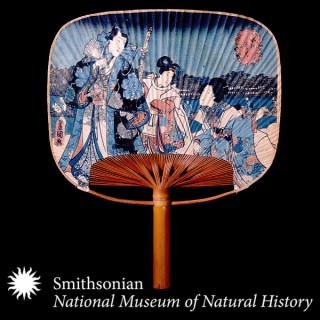
Behind-the-Scenes
Follow Behind-the-ScenesSmithsonian scientists give an insider's tour of their research and behind-the-scenes collections at the National Museum of Natural History.
Smithsonian Institution National Museum of Natural History
- Sep 18, 2011 LATEST EPISODE
- infrequent NEW EPISODES
- 10m AVG DURATION
- 7 EPISODES
More podcasts from Smithsonian Institution National Museum of Natural History
Latest episodes from Behind-the-Scenes

Pamela Henson, Historian of the Smithsonian, talks about 100 Years of the Smithsonian in Panama. Dr. Henson is director of the Institutional History Division of the Smithsonian Institution Archives. She researches and writes on the history of the Smithsonian and conducts the oral history project with Smithsonian staff.

Retired scientific illustrator, George Venable answers the question "What is special about scientific illustration?" Scientific illustrators practice their art as part of the research process, to communicate research results, to reach the general public, and to open people's eyes to the beauty of nature. The National Museum of Natural History hires numerous illustrators to document its collections for posterity. Ichthyology, botany, and entomology are just a few of the departments that need scientific illustrators. George L. Venable first came to the Smithsonian's National Museum of Natural History in December 1971, with twelve years of experience in medical and commercial illustration. He retired thirty years later in 2002, but continues to work with the Smithsonian as a research collaborator, maintaining the Entomology Illustration Archive that he established. During his career, his technique evolved from using traditional artist tools of pencil and paper to employing a computer, sophisticated software, and a pressure-sensitive tablet for digital illustrations.

Our Chief of Collections answers the following questions: Why do we collect objects and specimens? Why are collections important? Why are we digitizing them? What does the NMNH's 100 year anniversary mean to you? What do you think NMNH collections will be like in 2110 - or over the next hundred years? Learn more about our history: http://www.mnh.si.edu/onehundredyears/

Liz Dietrich, director of the Museum Support Center (where the Smithsonian houses the bulk of its collection), talks about the recent move of collections to the Suitland site.

Scientific illustrators work with scientists to accurately record or interpret science. This video talks to two Smithsonian illustrators and shows off some of their work.

From black-footed ferrets to dinosaurs to the largest fish collection in the world, this is a behind-the-scenes look at the collections within the National Museum of Natural History.

Smithsonian scientists show you some of the tools they use for researching and answering some of the natural world's questions.

















